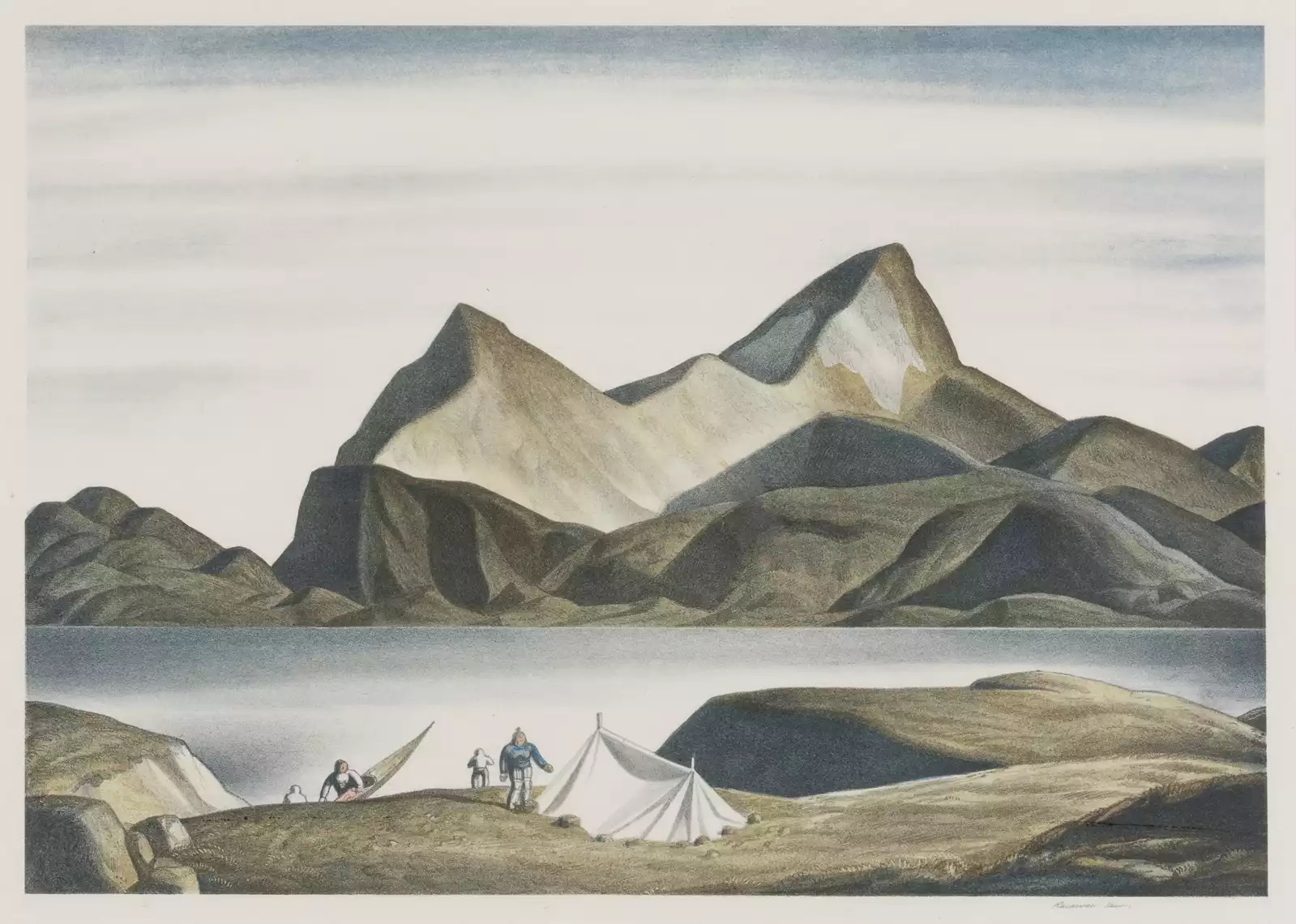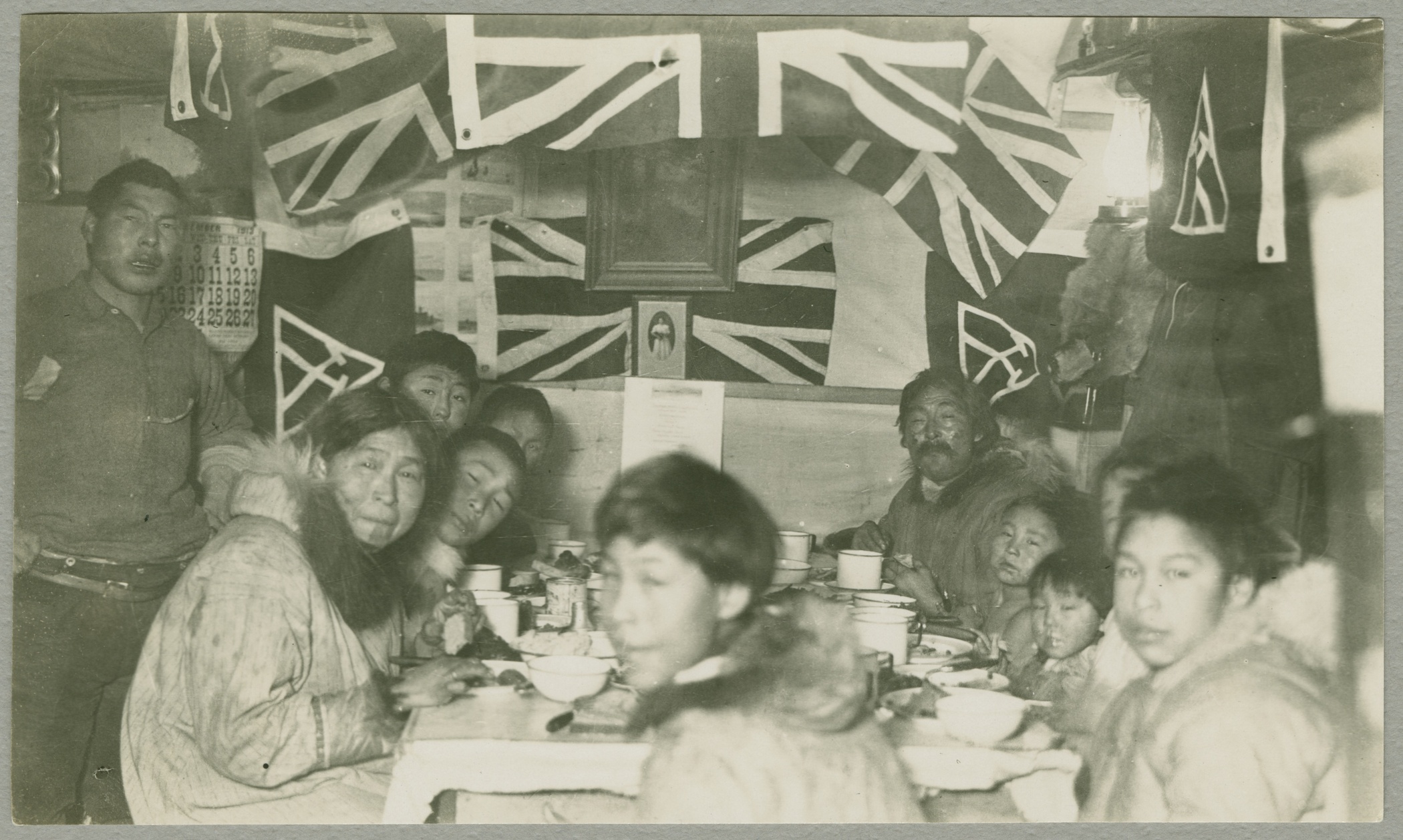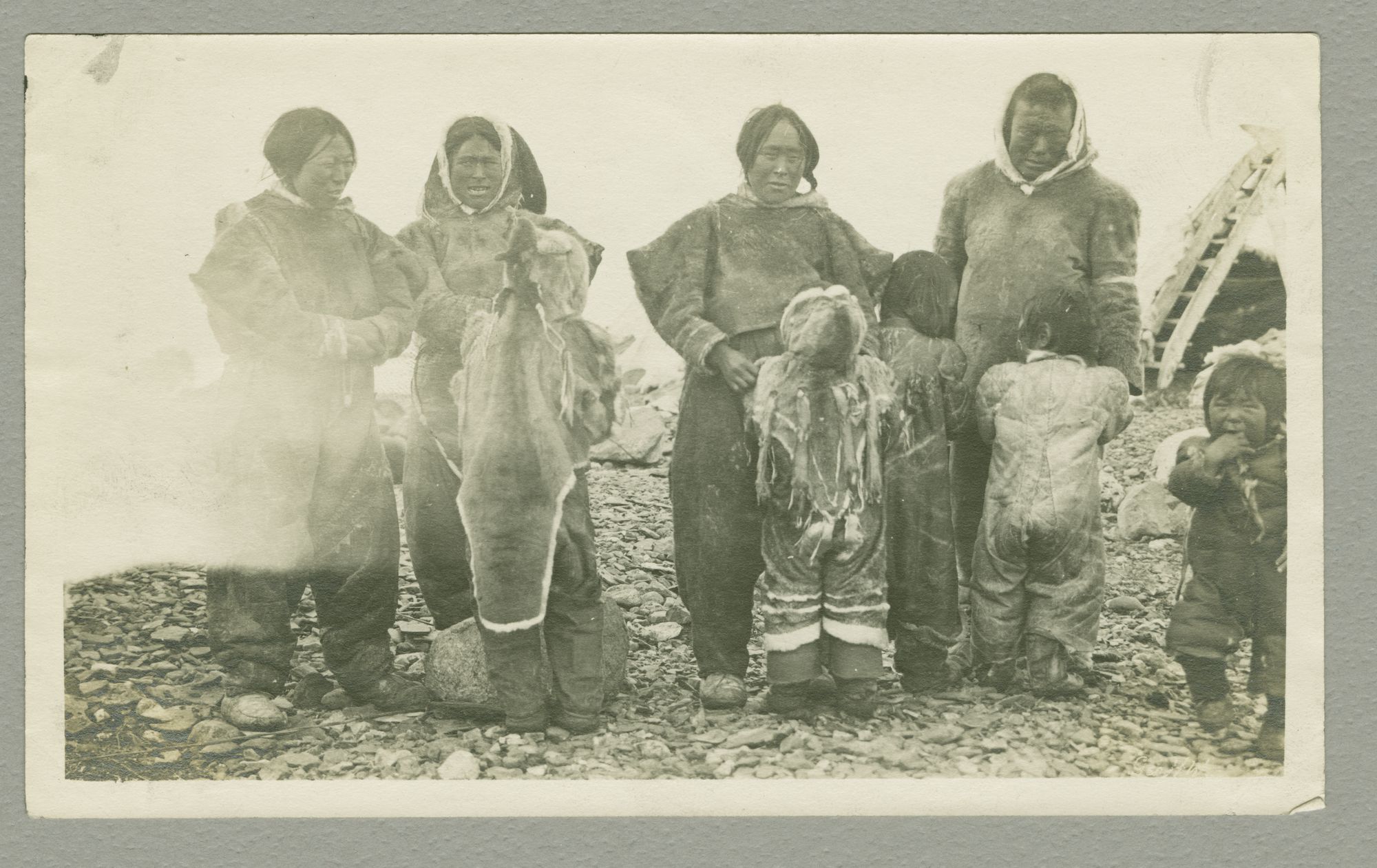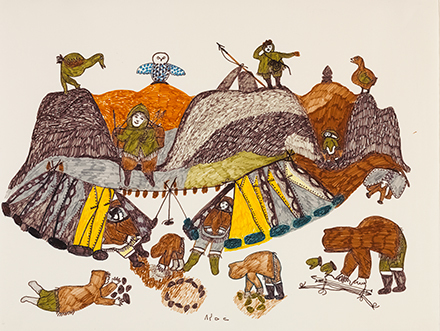Representation in the Home
Western Perspective
There is very little artistic depiction of home in Greenland from Western explorers and visitors. In part, this is because for a very long time the indigenous people of Greenland were living nomadically, thus there was no ‘home’, in the western sense, to portray.
This first image is a drawing by Rockwell Kent. A passion for the rugedness and isolation inspired Kent’s journey to Greenland and many other remote Northern locations. However, this representation of nomadic lifestyles was certainly not the common practice. The Arctic appeal many people because of its remote location and untouched beauty. With such minimal focus on the people in this photo it is likely Kent was also focusing on that side of Greenland with this piece. While Kent chooses to include the Indigenous people, they are all so distant that there are no features on any of their faces implying distance. This could be interpreted as either a physical distance from Kent, or perhaps more symbolically from the West and the explorers.
There was much disconnect between western explorers and artists with the Greenlanders. As such, indigenous peoples were often considered in contexts of western lifestyles. You can see this representation more fully in the next photo.
As we can see in this photo to the right, the central focus is on the indigenous people in what we can assume to be a western housing given the flags adorning the walls. Although these photos come from an expedition to the Canadian Arctic their representation of Inuit home is much more aligned with the majority. This next photo was taken from Vilhjamur Stefansson during the 1913-1918 Canadian Arctic expedition he led. The expedition is Canada’s largest, most expensive, and most scientifically sophisticated Arctic exploration to date, with the goal of scientific research and discovering new land. Additionally, this photograph is symbolic of the engrained systems of colonialism. This expedition occurred immediately before Canada was granted status as a self-governing dominion of the British Empire in 1914. Given the Christian roots of Christmas, it is not a traditional Inuit celebration. The colonial influence central to the existence of this photo is undeniable. Almost all of the subjects in the photo are wearing traditional Inuit clothing. However, the man standing on the left of the photo appears to be wearing pants and a dress shirt. This is perhaps reflective of Western influence from the explorers slowly seeping into the Inuit lifestyle, but the Inuit have mostly been able to maintain their culture.
In this photograph, we can further see Western perspectives of Inuit lifestyle. As in many other artistic representations of indigenous people of the Arctic, the subjects remained unnamed. Furthermore, the description of the children’s clothing as “costume” emphasizes additional lack of respect by the explorers. The lifestyle and culture of the Indigenous people is displayed as if it is a show for the explorers. We can see the continued theme of disconnect of the Westerners that is apparent throughout each of these pieces.
Indigenous Perspective
"Many of Pitseolak’s [artworks] communicate the essence of camp life, embodying the Inuit sensibility of community and cooperation." -Christine Lalonde
Pitseolak Ashoona demonstrates an Indigenous perspective on home life in the Arctic in her 1974 art Summer Camp Scene. Ashoona’s work not only represents practicalities of camp life but also represents values that accompanied this lifestyle: tradition, community-oriented spirit, and integration of indigenous life with the landscape. Ashoona’s art is multilayered: Someone familiar with this day-to-day indigenous life would still gain something meaningful from viewing this art, perhaps even more so than someone unfamiliar with traditional lifestyle in the Baffin Bay area.
The artwork depicts a family at a campsite nestled between hills. Standing atop the hills are many birds and a hunter with a harpoon. The birds on these hills are likely intended to represent some of the thousands of birds that migrate to Baffin Island in the Summer. The camp in the artwork also showcases traditional practices: the tents, pack on the dog, and hanging dried fish all preserve real practices that have been recorded from the area.
The children towards the front of the scene all look joyful, creating patterns with rocks or resting in the tents. The tone of the piece is quite bright: showing the joy that summer brought these communities. The colors also drive this tone: Ashoona uses warm yet natural colors to create the feeling of calm, serene, joy.
The hills in the background create another layer in the depiction of “home.” The Inuktitut name for Cape Dorset means “big hills,” and Ashoona includes these hills, signaling to her audience that a part of home for her is the landscape of Cape Dorset. The characters in the drawing are shown as both inhabiting the landscape and integrated into it. The colors used for the people in the drawing are similar to the colors used for the rest of the scene. Ashoona does not work to separate the characters in the painting from the birds and hills in the scene. Instead, she shows the people at the same scale as the birds, signaling a certian notion of equivalence.
Lalonde, Christine. “Pitseolak Ashoona, Summer Camp Scene, c. 1974.” Art Canada Institute - Institut de l’art canadien, n.d. https://www.aci-iac.ca/art-books/pitseolak-ashoona/key-works/summer-camp-scene/.
“Pitseolak Ashoona.” DORSET FINE ARTS, n.d. https://www.dorsetfinearts.com/pitseolak-ashoona.




